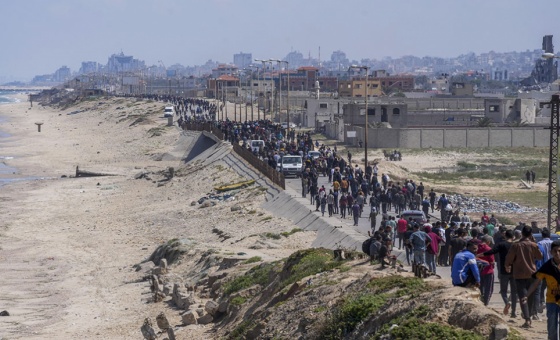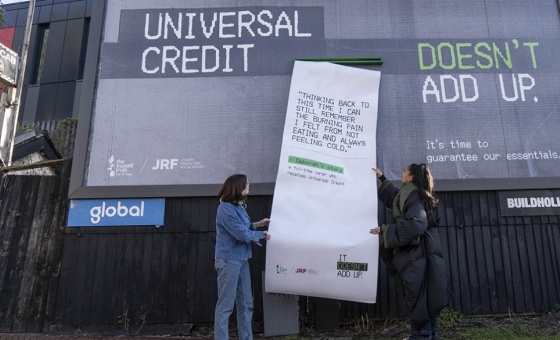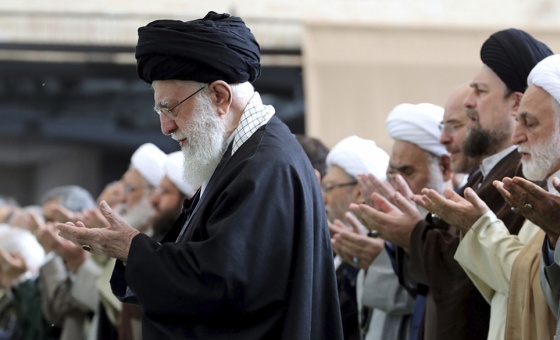This is the last article you can read this month
You can read more article this month
You can read more articles this month
Sorry your limit is up for this month
Reset on:
Please help support the Morning Star by subscribing here
“THE biggest Rail Strike since 1989.” That’s the headline on ITV News, the Express, Sky News and more. The Guardian and Mirror went with variations like “The biggest rail strike in 30 years” for their headlines.
“The biggest rail strike since 1989” has also spread internationally: it’s the Reuters headline and is being used for top US, Indian, French and other newspapers reporting on Britain.
But not one of these media outlets seem to have said what happened in 1989, in the rail strike they keep highlighting.
The short answer is: rail staff went on strike for more pay and won an inflation-beating pay rise.
The the National Union Of Railwaymen (NUR) was the forerunner of the RMT. It was an old-fashioned name even then, as the workforce and union, while still somewhat male-dominated, did include women.
In 1989 the NUR was led by left-ish president Jimmy Knapp, but then as now it was the determination and militancy of the members that counted.
Inflation was around 8 per cent. In April 1989 the then-nationalised British Rail offered workers a below-inflation 6.7 per cent pay offer, with strings. The NUR balloted members and, after six one-day strikes, won an above-inflation pay settlement.
Early in the strike the government pretended the NUR was losing support and claimed lots of railway workers were breaking the strike, but this was hot air.
In fact, when the government gave in with an above-inflation offer, Knapp had a bit of a struggle to get the union’s elected representatives to accept British Rail’s deal worth 10 per cent overall, with a basic settlement of 8.8, and no strings.
The headline in the Evening Standard was “Peace tonight as British Rail cave in.” The Standard admitted that this was “near total surrender by British Rail.”
Some people might say, this was the old days, the 30-years-ago days, back when unions were stronger. This is of course generally true, but the RMT has in fact retained much of the strength of the NUR, as we can see from the effect of these strikes.
It’s also worth noting that the NUR were not taking on a weak opponent: Margaret Thatcher was PM, the “Iron Lady” who had managed to beat back the trade unions.
There is one crucial bit of context. Despite the defeat of the miners in 1985, from 1988 there was a bit of a recovery in the union movement. Faced with inflation, there were a growing number of strikes before and after the NUR took on British Rail. Many — although not all — of these strikes ended in victory for the workers.
These were not predictable battles. A number of the strikes came from workers who weren’t seen as the best organised or most militant sectors: nurses’ strikes in 1988 or a strike by ambulance workers in 1989-90 took many by surprise, and like the NUR, were victories.
The NUR’s national rail strike was quite orderly, but many of the other strikes involved more spontaneous, grassroots and unofficial organisation. Anti-union laws made strikes difficult, so on the London Underground Tube drivers organised many days of completely unofficial strikes, which also won them a pay rise.
The 1989 NUR strike won in just six days because the government were already a bit on the run from other pay strikes and wanted to try put a cap on the action.
As the RMT are currently at the forefront of fighting for pay in these new, harsh, inflationary times, it wouldn’t surprise me if it takes a bit more than six days of strike action for them to win a settlement.
But there is a chance that they could spark wider action. And the lesson from 1989 is that when a lot of workers start fighting for better pay at the same time, they are more likely to win their battles.
How to Kidnap the Rich
Last week I recommended Megha Majumdar’s novel A Burning. It is a great book in itself, and also one of the small but very successful recent wave of “social” novels by Indian authors that tell the tales of people who go from rags to riches, or who try and get knocked back and end up still in rags.
A Burning is a terrific read, like a Steinbeck novel set in Kolkata. This week I am recommending another recent novel by an Indian author, Rahul Raina’s 2021 How to Kidnap the Rich.
Raina’s novel has a very different style from Majumdar’s: it is a knockabout farce, a black comedy, that rattles along at terrific pace.
But like A Burning and other Indian social novels, How to Kidnap the Rich puts well written characters in all the contradictions and squeezes of a modernising India.
It shows people trying to hustle out of traditional poverty into better-off places in the modern service economy and having to lie and cheat to get along — because the political and economic establishment lie and cheat to keep their position.
How to Kidnap the Rich is specifically a satire of India’s economy, but the novel also reflects plenty of elements of social corruption and oppression in the West.
The main character believes in the better-yourself-by-learning promise, until it fails, so he stumbles into educational corruption — sitting exams for well-off Indian boys so they can get to favoured universities. As a student of corruption, I find the way our hero is manoeuvred into becoming an educational fraudster by “respectable” upper middle class families very convincing.
How to Kidnap the Rich also deals with other intensely modern parts of India — including the intrusive effects of social media and reality TV shows. University entrance exam cheating, reality TV distorting reality, corrupt businessmen grabbing political influence — the novel deals with issues that appear in India and also appear in the West.
Like I said last week, there is a lack of British novels that deal with both high and low society together, that have real, human characters trying to get by in our increasingly inhumane economic system.
Luckily for us, India seems to be producing some important, or entertaining fiction that fills that gap.










